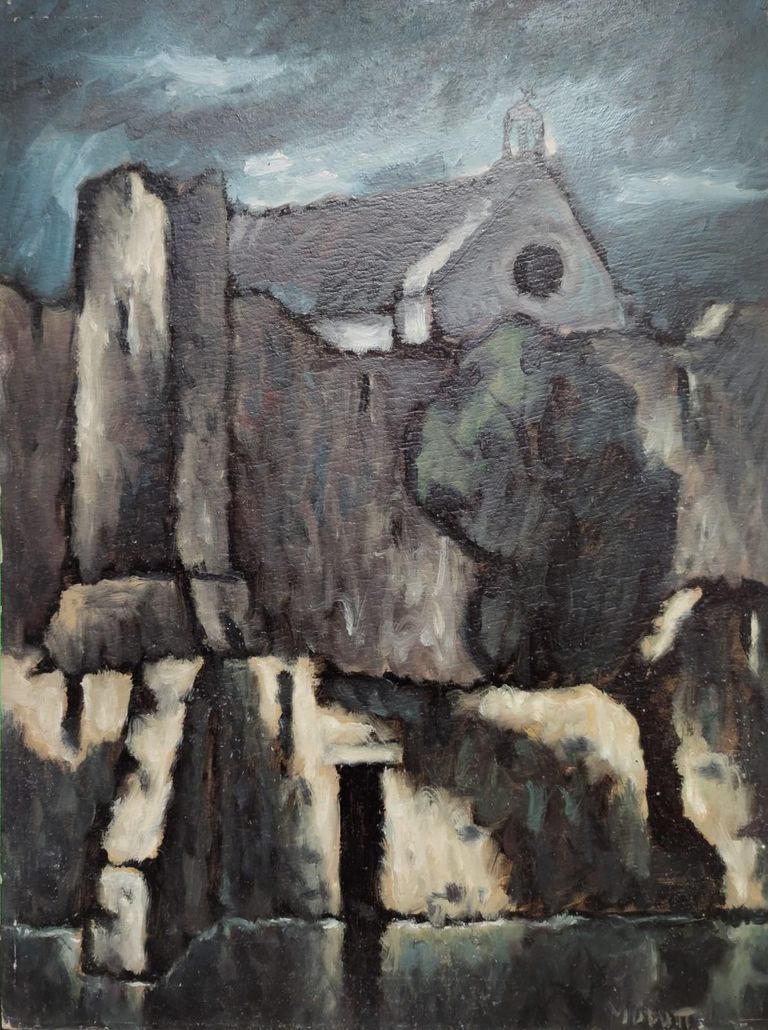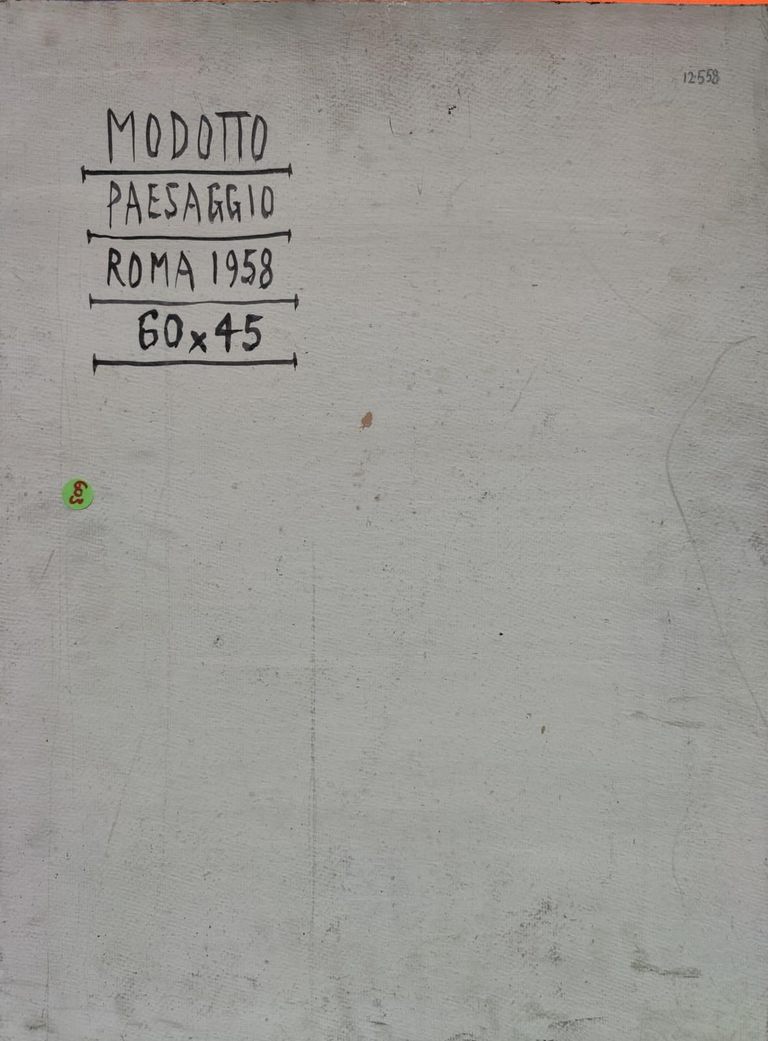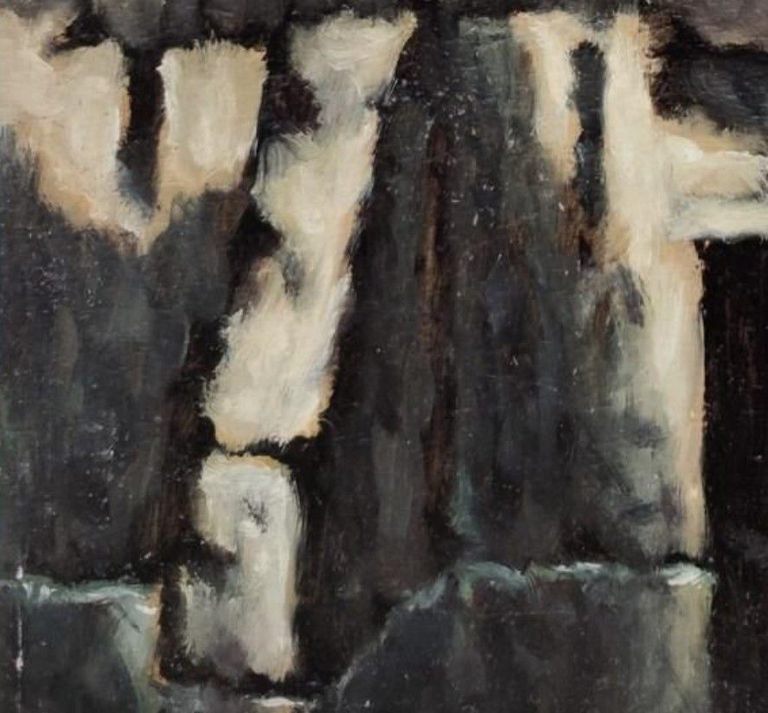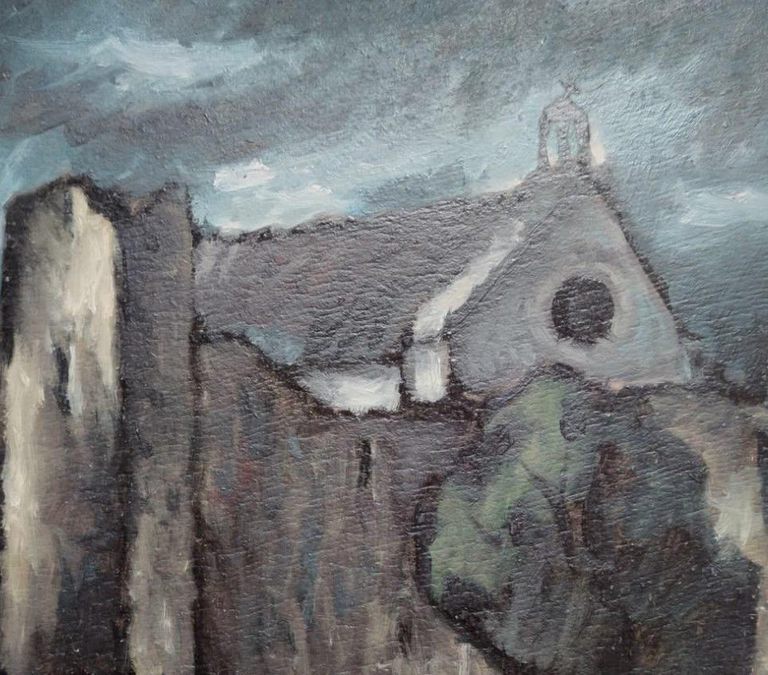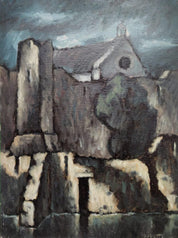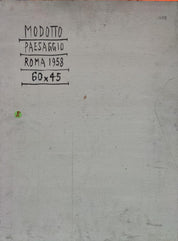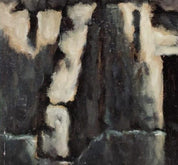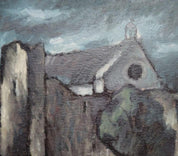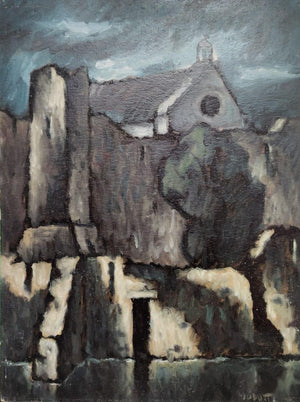Similar Items
Modotto Angilotto Ermagora (1900 - 1968) Paesaggio Roma 1958
Modotto Angilotto Ermagora
Artwork Details
Artist:
Modotto Angilotto Ermagora
Origin:
Italy
Dimensions:
60 x 45 cm
Artwork Description
Artist: Modotto Angilotto Ermagora (1900 - 1968)Title: Paesaggio Roma (Landscape of Rome)
Medium: Oil on Masonite
Date: 1958
Signature: Signed lower right
Description: Immerse yourself in the captivating beauty of Modotto Angilotto Ermagora's "Paesaggio Roma," an oil painting that transports you to the scenic landscapes of Rome. The artist's skilled hand brings to life the essence of the city, capturing its architectural marvels and natural charm.
Ermagora's signature, elegantly placed in the lower right corner, serves as a testament to his artistic craftsmanship and dedication. The meticulously chosen colors and masterful brushwork evoke the unique atmosphere of Rome, inviting you to explore its streets and vistas.
Measuring at 45 x 60 cm, this oil painting on Masonite presents Ermagora's vision of Rome in a size that allows you to appreciate the intricate details and rich textures that define the artwork. The reverse side, dated "1958," adds historical context to the piece, providing insight into the time of its creation.
Angelo (Angilotto) Modotto (1900 - 1968): A Cosmopolitan Artistic Journey
Born on July 12, 1900, in Udine, Angelo Modotto embarked on a life marked by continuous departures and returns, reflecting his cosmopolitan and restless spirit.
In March 1918, he was enlisted and sent to the front, concluding his military service in Rome in 1921. Between 1922 and 1923, he attended the drawing course at the Giovanni da Udine School of Arts and Crafts. Later, he enrolled at the Venice Academy of Fine Arts alongside artists like Candido Grassi and the Basaldella brothers (Dino, Mirko, and Afro).
His fascination with the medieval world led him to change his name to Angilotto Ermagora in the mid-1920s, believing himself to be the heir of a fourteenth-century noble family. During 1927 and 1928, he exhibited paintings with distinctive graphic precision and unique compositional cuts in Bologna and at the Opera Bevilacqua La Masa.
In October 1928, along with the Basaldella brothers, Grassi, Alessandro Filipponi, and Fred Pittino, he founded the Friulian avant-garde school in Udine, passionately claiming its paternity despite polemical disputes with other members.
In early 1929, Modotto traveled to Florence with the Basaldellas and Filipponis to continue his studies. However, by April of the same year, he was in Milan attending courses at the Brera Academy, forming relationships with prominent artists like Aligi Sassu, Bruno Munari, Renato Birolli, Gino Ghiringhelli, and more. He obtained his diploma by the end of that year.
Between early 1930 and mid-1932, he sought to immerse himself in the latest European artistic trends. In Paris, he lived with his sister Elsa, where he came into contact with prominent Italians such as Massimo Campigli, Giorgio De Chirico, Filippo De Pisis, Alberto Savinio, and Mario Tozzi.
Particularly notable is his friendship with Gino Severini, whose artistic research significantly influenced Modotto. His style underwent a transformation in Paris, featuring characters with angular anatomies, earthy color palettes, and wavy, fragmented brushwork. Paintings like "Submerged Towers" and "Two Figures and Towers" remain iconic representations of this dreamy and primordial period.
During this time, he exhibited in various international locations, including Constantinople and Moscow in 1932, and San Francisco in 1933. Back in Italy, he participated in multiple editions of the Venice Biennale and the Rome Quadrennial.
In 1933, Modotto relocated to Rome and exhibited as part of the collective "Friulian avant-garde school" at the Sabatello gallery the following year. He continued to maintain ties with his hometown, spending summer holidays in Udine where he delved into furniture decoration and goldsmithing.
As the 1930s transitioned into the 1940s, his earlier design rigidity gave way to a vibrant colorism reminiscent of Venice. Modotto's artistic journey also witnessed international exploration; from 1947 to 1950, he lived in Buenos Aires, Argentina, where he engaged with the local artistic community. Upon his return to Italy via Rome, he continued to foster relationships with prominent artists and collectors.
In 1953, he settled back in Rome and later resided at Villa Strohl Fern. His final years of artistic output featured paintings depicting turreted cities, castles, arches, walls, and buttresses, evoking medieval atmospheres reminiscent of Arnold Böcklin and Giorgio De Chirico. Additionally, his work often included nude, faceless figures, rendered with fields of color bordered by a thick dark stroke.
In the spring of 1968, Modotto, who had been seriously ill, returned to Udine as a guest of his sister Teresa. He passed away on April 25th, marking the conclusion of a remarkable and cosmopolitan artistic journey.
"Paesaggio Roma" by Modotto Angilotto Ermagora invites you to experience the eternal city's allure through the artist's perspective. The carefully chosen medium and artistic techniques combine to create a timeless portrayal of Rome's landscapes, capturing the essence of the city's history, architecture, and natural beauty.MODOTTO ANGELO (ANGILOTTO) ( 1900 - 1968 ) The second son of five children, he was born in Udine on 12 July 1900 to Giovanni Battista and Maria Feruglio. Modotto.'s biography is marked by continuous departures and returns that give an account of a cosmopolitan and restless personality. In March 1918 he was enlisted and sent to the front, while he completed his military service only in 1921 in Rome. Between 1922 and 1923 he attended the drawing course of the Giovanni da Udine School of Arts and Crafts. Two years later he enrolled at the Venice Academy of Fine Arts which he attended together with Candido Grassi and the three Basaldella brothers ( Dino , Mirko and Afro). From the middle of the decade he became passionate about the medieval world to the point that, believing himself to be the heir of a fourteenth-century noble family, he changed his name to Angilotto Ermagora . In 1927 and 1928 he exhibited in Bologna and at the Opera Bevilacqua La Masa paintings with clear graphic definition and unusual compositional cuts. Together with the Basaldellas, Grassi, Alessandro Filipponi and Fred Pittino in October 1928 he founded in Udinethe Friulian an avant-garde school of which, in polemical dispute with the other exponents, he would later always claim paternity. At the beginning of 1929, together with the Basaldellas and Filipponis, Modotto. was in Florence to complete his studies, but already in the month of April, in the company of Grassi, he was found in Milan enrolled in the courses of the Brera Academy. Here he formed relationships with Aligi Sassu, Bruno Munari, Renato Birolli, Gino Ghiringhelli and at the end of the year he finally obtained his diploma. From early 1930 to mid 1932 he was seeking to catch up on the latest European trends. In the French capital he lived with his sister Elsa and came into contact with the Italians (Massimo Campigli, Giorgio De Chirico, Filippo De Pisis, Alberto Savinio and Mario Tozzi,) active there. With Gino Severini, in particular, he struck up a sincere friendship and the research of the artist from Cortona played an essential role in his stylistic maturation. In Paris, in fact, Modotto's painting evolved significantly: naked characters with squared anatomies appear; the color range adopts earthy tones; the brushstroke becomes wavy and fragmented. Submerged towers, Two figures and towers, composition, all from the very early years of the decade, remain among the cornerstones of the period and exemplify the dreamy and primordial atmosphere that dominates many of the artist's works. In this period, moreover, the exhibition occasions increased by measure: in 1932 he exhibited in Constantinople and in Moscow, in 1933 in San Francisco. In Italy, however, he participated in various editions of the Venice Biennale and the Rome Quadrennial. In 1933 Modotto. moved to Rome and the following year he exhibited in the collective “Friulian avant-garde school” at the Sabatello gallery. In 1939 M. was in Turin and Genoa. The contacts with his hometown, however, never failed. In Udine he spent his summer holidays every year devoting himself not only to painting, but also to furniture decoration and goldsmithing in Leo Zoratti's workshop. At the turn of the 1930s and 1940s, the design rigidity of the previous seasons gradually eased in favor of an intense colorism reminiscent of Venice.In March 1941 M. was called up in Udine but, being discharged, he was immediately able to return to Rome. From 1947 to 1950 he emigrated to Argentina, Buenos Aires, where he immediately came into contact with the most lively artistic environment. Returning to Italy via Rome, he went to Udine and then again to the capital where he strengthened contacts with the painters Mario Mafai and Giovanni Omiccioli and the collector Riccardo Gualino. At the end of the year he settled near Rome, in the village of Sutri, in an eighteenth-century villa with a large park and made available by the notary Tito Staderini. In 1953 he returned to Rome and three years later took up residence at Villa Strohl Fern. Especially the last years of activity date paintings with turreted cities, castles, arches, walls and buttresses that evoke nostalgically medieval atmospheres and refer to the paintings of Arnold Böcklin and Giorgio De Chirico. There are also the naked and faceless figures, which recur throughout M.'s research, now rendered with fields of color bordered by a thick dark stroke. In the spring1968 the artist, seriously ill, returned to Udine guest of his sister Teresa, in whose house he died on April 25th.

